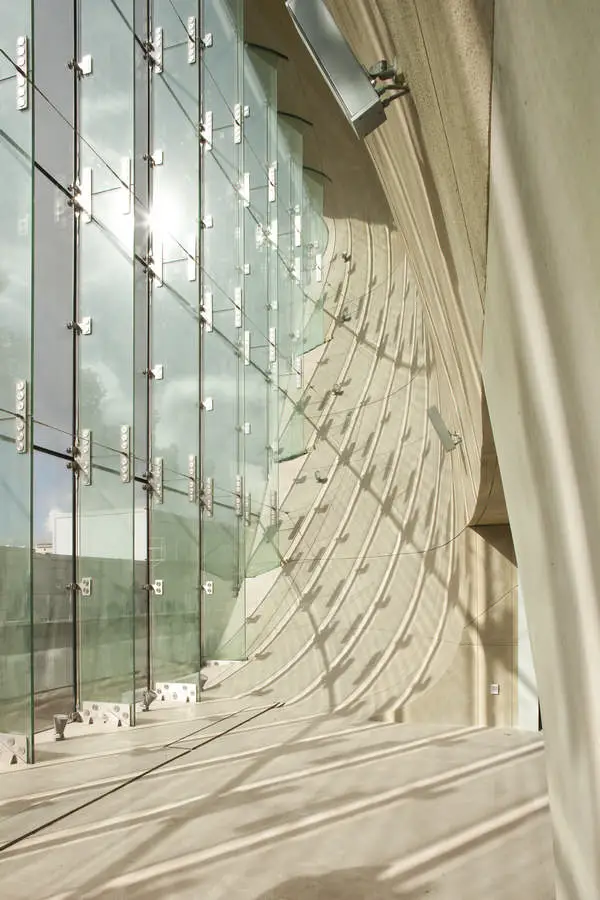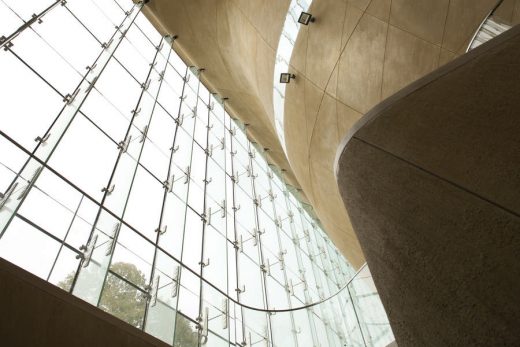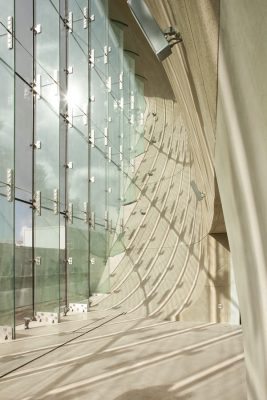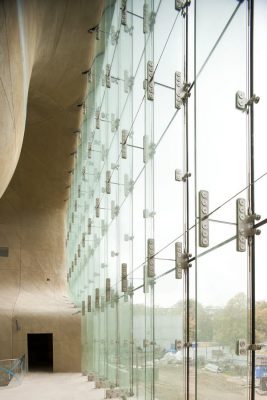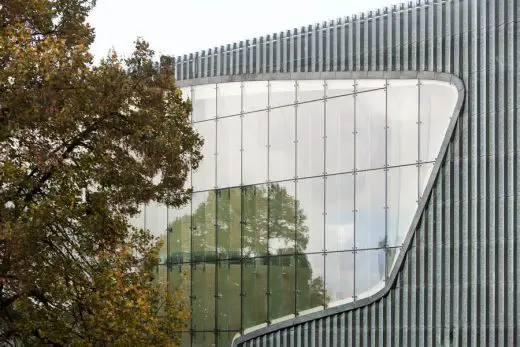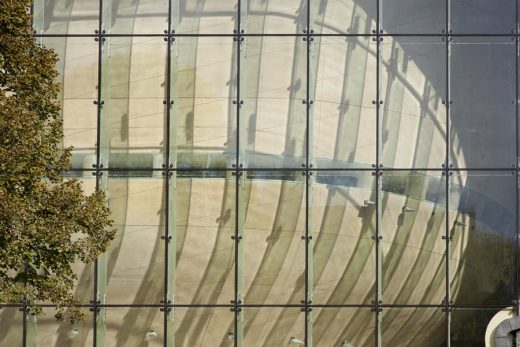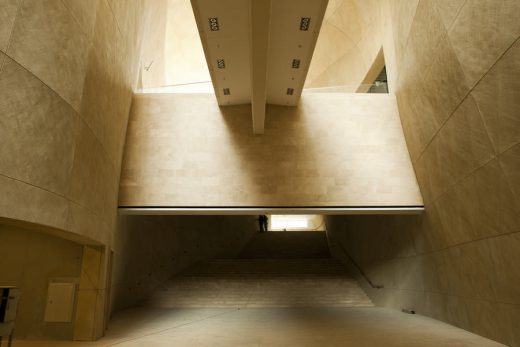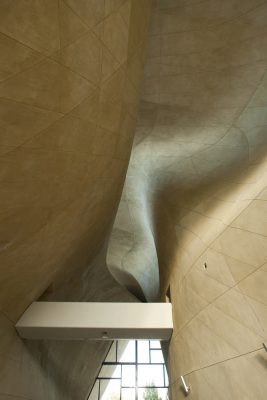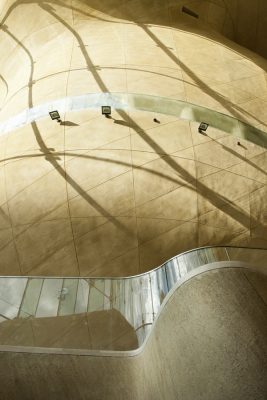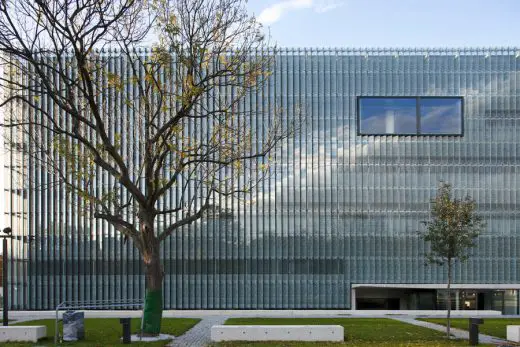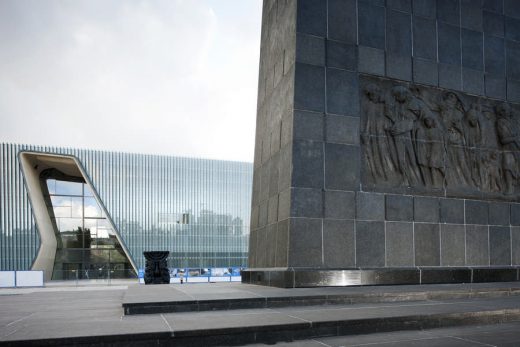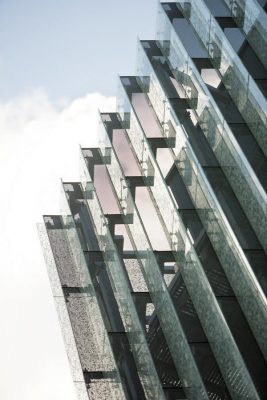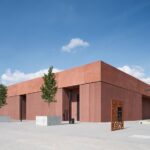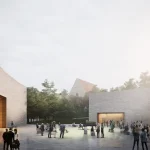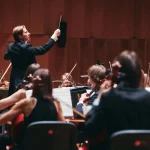Museum of the History of the Polish Jews Warsaw, Poland architecture interior design architect
Museum of the History of the Polish Jews
Contemporary Architecture in Poland design by Lahdelma & Mahlamäki Architects
post updated 25 November 2024
Design: Lahdelma & Mahlamäki Architects
Location: Warsaw, Poland
Photos: Juha Salminent
8 Oct 2013
Museum of the History of the Polish Jews Building
Museum of the History of the Polish Jews in Poland
THE MUSEUM OF THE HISTORY OF POLISH JEWS
The origins of the Museum of the History of the Polish Jews go back to the mid-1990s, when the founding director of Tel Aviv’s Diaspora Museum and the Holocaust Museum in Washington DC, Yeshayahu Weinberg, convened an international working group to plan a new museum dedicated to the history of the Polish Jews.
Some 150 researchers from different countries in Europe, Israel and North America participated in gathering the material on the history and lives of the Jewish people. By the year 2003, the fundamental idea and preliminary exhibition plan for the museum had been completed.
In spring 2005 an international architectural competition was held for the design of the building to house the museum. The selection of the participants of the architectural competition was based on expressions of interest.
Among the architects invited to join the second stage of the competition were Studio Daniel Libeskind, Kengo Kuma & Associates, Zvi Hecker Architects, Peter Eisenman, David Chipperfield and six other groups, including Lahdelma & Mahlamäki Architects.
The international members of the jury included among others, Professor Kenneth Frampton.
The proposal “Yum Suf”, “Sea of Reeds”, by Lahdelma & Mahlamäki Architects was declared winner in summer 2005.
Warsaw has been one of the most important cities for Jews; before the Second World War there were half a million Jewish inhabitants in the city.
The museum’s plot is about a kilometre away from the old centre of Warsaw. The site is a park surrounded by residential buildings. The park located there today, named after the former Chancellor of the Federal Republic of Germany, Willy Brandt, formed the core of the Warsaw ghetto. The Memorial to the Warsaw Ghetto Uprising is erected in the park.
The Memorial to the Warsaw Ghetto Uprising located next to the museum is one of the key points of departure for the design. The square in front of the memorial and the museum are sufficiently close together and their dimensions are mutually compatible: the square and the museum building will form a new urban space.
The main entrance is placed on the memorial side of the building, from where a series of spaces continues via a bridge towards the landscape. The basic form of the building is compact and simple, reducing its footprint in the surrounding park. The competition jury stated in its evaluation, that the concept had been realized “without unnecessary rhetoric, with simplicity and elegance”.
The name of the competition proposal, “Yum Suf”, symbolically refers to the architecture of the main hall. The inspiration for the space has been the legends of the Old Testament, although at the same time forms of the hall refer to the universal and abstract phenomena of nature. The main hall is the most important element in the architecture of the building; a pure and silent space introducing the museum to the visitors.
The museum building is a multifunctional centre for research, exhibition, education and culture relating to the Jewish heritage. The core exhibition area comprises a hall that resembles an only half-finished space, almost five thousand square metres in area, beneath the main lobby. The exhibition will present the different forms and periods of Jewish culture from the Middle Ages on until today– the holocaust is only one of the themes of the exhibition.
The message will be conveyed in the form of a narrative exhibition, making use of reconstruction, moving pictures, and various constructed milieus and to minor extent also historical objects. The plan for the core exhibition was part of the competition source material, and the functional requirements and gallery division for the exhibition were to be considered in designing the building. There is to be a special focus on young people. The museum expects half a million visitors annually.
The frame of the building is cast-in-situ concrete. The free-form walls and the curving shapes of the roof connecting to them form part of the frame system. The total thickness of the steel structured and sprayed concreted wall is about 60 cm. The design of the curved walls, which are bearing structures, was particularly challenging.
To the best of our knowledge it is the biggest uniform, geometrically double curving surface that has ever been realized. The design was partly implemented with assistance of software developed by the designer specifically for this project by Markus Wikar / Architects Lahdelma & Mahlamäki.
The outer layer of the double facade is to be clad with laminated glass panels and pre-treated, perforated copper panels.
The building permission drawings were handed over to the City of Warsaw in the spring 2008. The foundation stone was laid in June of 2009. The museum launched its activities the 19th of April 2013. The Core Exhibition will open to the public in September 2014.
Museum of the History of the Polish Jews in Warsaw – Building Information
Project Name: The Museum of the History of Polish Jews
Address: 6 Anielewicza St., 00-157 Warsaw, Poland
Year of completion: 2013
Total Floor Area: 18 300 m²
Building Footprint Area: 4 400 m²
Site Area: 12 442 m²
Volume: 123 000 m³
Client: City of Warsaw and Ministry of Culture, Poland
Tenant: The Museum of the History of Polish Jews
Function of building: Museum consisting of exhibition spaces, auditorium, and offices
Architectural design: Architects Lahdelma & Mahlamäki Ltd., Finland with local firm Kuryłowicz & Associates in Warsaw
Author: Professor Rainer Mahlamäki, M.Sc Architect
Principals in charge: Riitta Id [ -design phase], Maritta Kukkonen, Markus Wikar (curved wall)
Collaborators: Jukka Savolainen, Mirja Sillanpää (built-in furniture), Miguel Freitas Silva
Architectural collaboration in Poland: Kuryłowicz & Associates, Warsaw, Poland Stefan Kuryłowicz [until 2011], Ewa Kuryłowicz [2011-13], Paweł Grodzicki [-design phase], Marcin Ferenc, Tomasz Kopeć, Michal Gratkowski
Furniture design in office spaces: Grupa Plus Architecture Studio, Poland
Furniture design in public spaces: Studio Rygalik, Poland
Exhibition design: Event Communication, UK Nizio Design International, Poland
Signage design: Towarzystwo Projektowe, Poland
Structural Engineering: Arbo projekt, Poland
HVAC Engineering: Pol-Con Consulting, Poland
Electrical engineering: Elektroprojekt SA, Poland
Contractor Polimex – Mostostal SA, Poland
Principal materials Silk printed glass, copper, concrete
Principal structure Concrete, steel
Construction Jul 2009 – May 2013
Opening 19 Apr 2013
Cost 160 million PLN (~39 Million €, 48 Million USD)
The Museum of the History of Polish Jews images / information received from Lahdelma & Mahlamäki Architects
Location: 6 Anielewicza St., 00-157 Warsaw, Poland, Eastern Europe
New Architecture in Poland
Contemporary Architecture in Poland
Polish Architecture Designs – chronological list
Warsaw Architecture Tours by e-architect
Jewish Museum Buildings
Jewish Museum Buildings
Jewish Museum Berlin, Germany
Design: Daniel Libeskind Architect
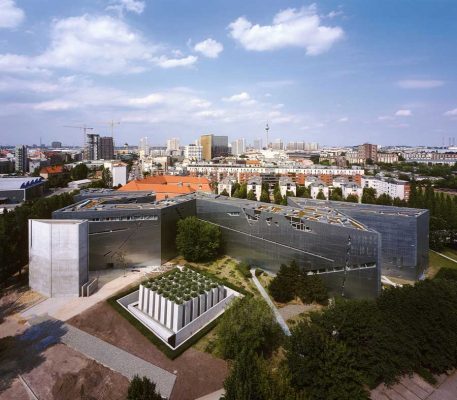
photo © Bitter Bredt
Jewish Museum Berlin Building
Jewish Museum Copenhagen, Denmark
Design: Daniel Libeskind Architects
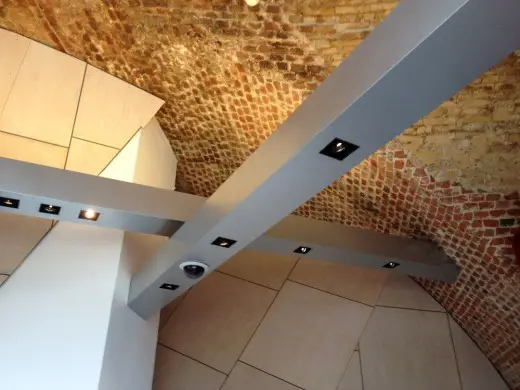
photograph © Adrian Welch
Danish Jewish Museum Building
NMAJH Philadelphia, PA, USA
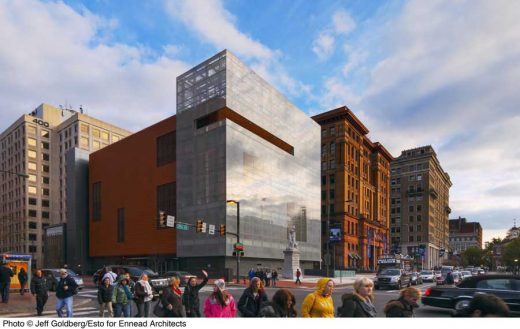
photo © Jeff Goldberg/Esto for Ennead Architects
National Museum of American Jewish History Philadelphia
Contemporary Jewish Museum San Francisco, CA, USA
Design: Studio Libeskind
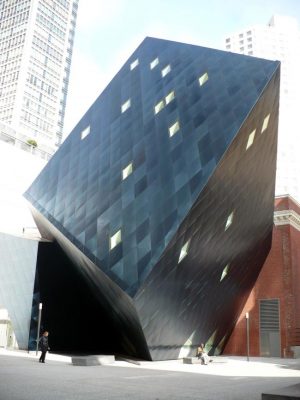
photo © Andrew McRae
Contemporary Jewish Museum San Francisco, CA, USA
Jewish Museum of New York Exhibition
Jewish Museum Berlin Expansion
Museums in Poland
Polish Museum Buildings
The Polish History Museum in Warsaw wins the 2024 ULI Global Award for Excellence
Architects: WXCA
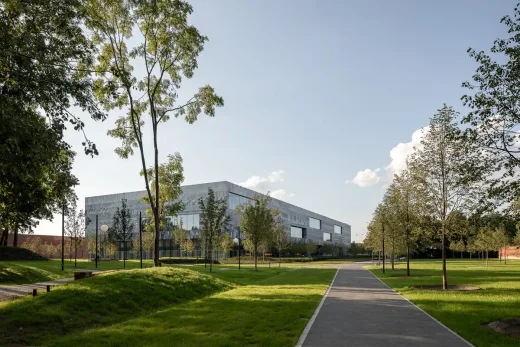
photo : WXCA_Daniel Ciesielski
Polish History Museum in Warsaw Building
Polish Army Museum Warsaw, Warszawa
Architecture: WXCA
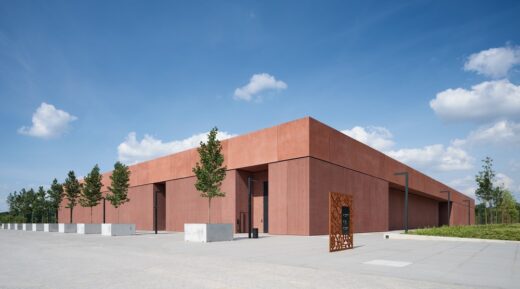
photo : Marcin Czechowicz
Polish Army Museum Warsaw
Greater Poland Uprising Museum, Poznan
National Museum in Szczecin Building
Museum of Modern Art in Warsaw
Museum of Polish History Warsaw
Museum of the Second World War
Museum Contemporary Art Wroclaw
Polish Architecture
Poland National Stadium Warsaw
Comments / photos for the Museum of the History of the Polish Jews – New Architecture in Poland design by Lahdelma & Mahlamäki Architects page welcome

